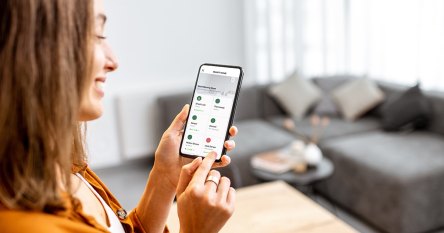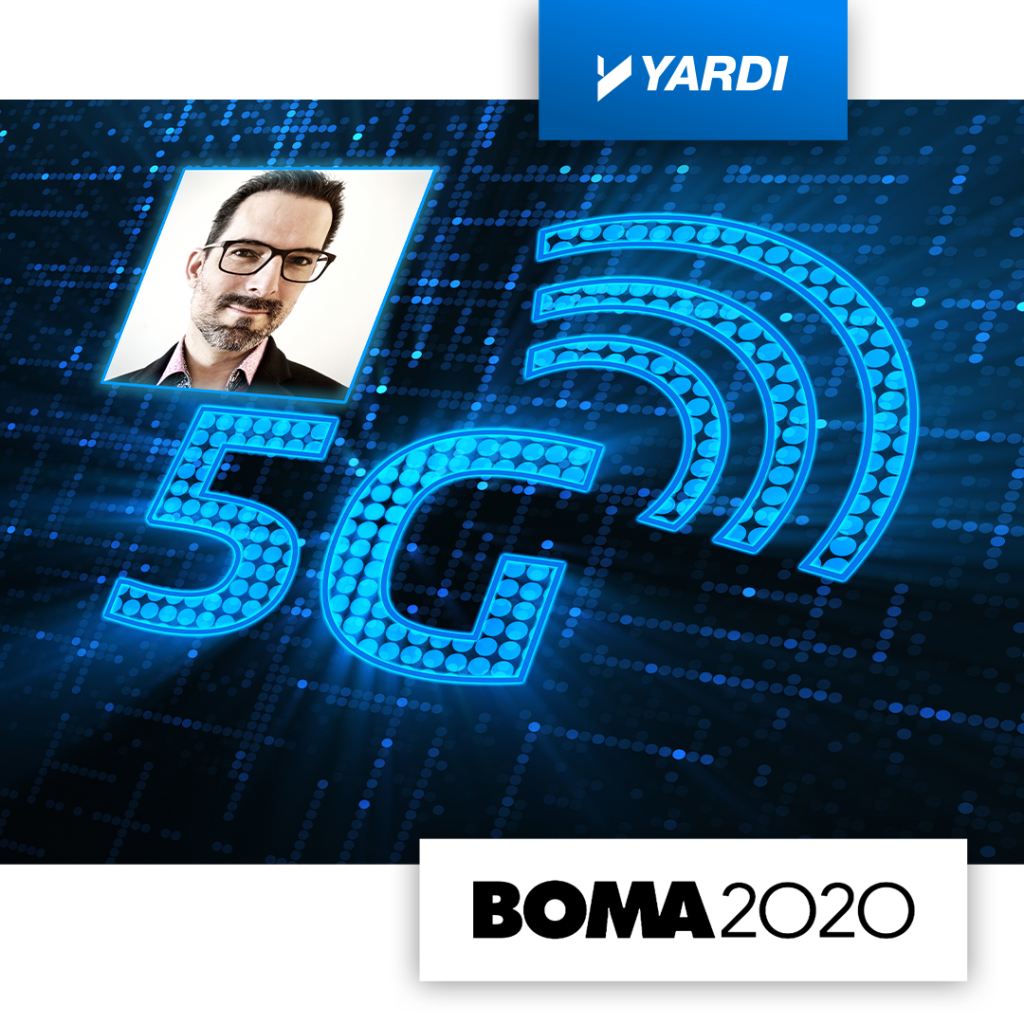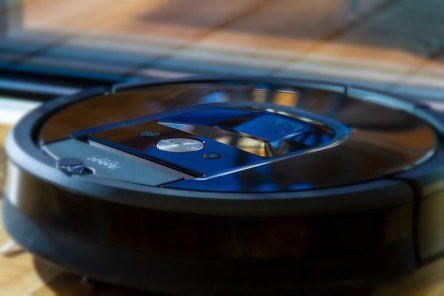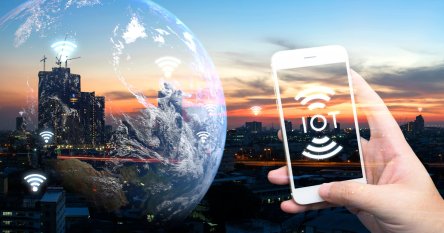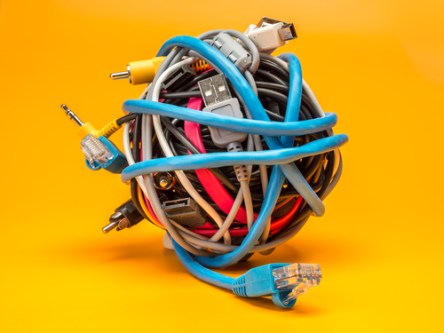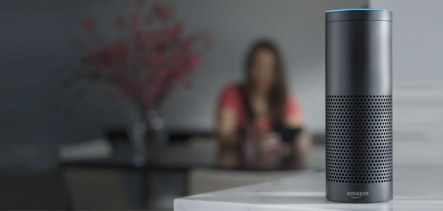Smart home technology is expanding rapidly. Renters want smart home amenities for security and convenience. Property managers are interested in its easy and productive operational management. Smart home technology is also used for risk mitigation and real-time insights to improve buildings’ sustainability as well as property managers’ understanding of their properties’ processes. RentCafe Home IQ is Yardi’s smart apartment solution for the multifamily industry. It allows for increased revenue opportunity and resident retention by offering advanced technology features and experiences. Home IQ deploys and manages a fleet of connected devices without installing custom or third-party software, making it easy to add convenience, streamline operations and manage risk. With new technology comes fresh considerations and questions. Here to help is Vice President Greg Smith. He’s been with Yardi more than 20 years and has been instrumental in the development of Home IQ. Below he shares a little insight into the smart home market, why we made Home IQ and how it compares to other products for multifamily. What is the current state of the smart home market? Smith: Smart home is hopping! And it’s not just for the techies out there. We’ve seen that renters are beginning to look for it and, in some asset classes, expect it. The good news is that smart home tech has as many (or more) benefits for the property owner and operator as it does the resident. Why is Yardi getting involved? Smith: Smart home tech is a natural expansion for Yardi. It’s easy to think of smart home as just a resident function, but the reality is that it can be a huge efficiency gain for the owners and operators. Yardi is always working on solutions to help our clients improve asset revenue and decrease risk, and smart...
Smart Home Tech
Good For Everyone
Smart home technology is our new reality. We’ve gone from remotely controlled lightbulbs to a whole universe of interconnected home goods that can be controlled from a phone. Smart home automation saves time and increases efficiency, improving resource management and security for both property management teams and residents. Renters in many markets are seeking out smart apartments, often willing to pay more for units with the right smart home tech. While smart home technology may seem like a simple appliance upgrade, it often offers data resources that have the potential to transform your business. Property managers use smart home tech to mitigate risk and get real-time insights that can ultimately streamline processes and improve sustainability at their communities. We asked over 16,000 renters about smart home technology and their preferences in a survey on RentCafe.com. Although the technology is still relatively new, a full 48% of respondents said that smart home technology was somewhat to very important to them. Here is what we found. What today’s renters are looking for Many renters are beginning to consider smart home technology a necessity more than a luxury. Some features that are more important to them than others — including smart thermostats, automated lighting features, alarm/security systems and smart locks. While many of these features are for renters’ convenience, it is also for their security and safety. In our smart home survey, we asked respondents which features they desired most, allowing them to choose more than one option. Of the 16,590 responses, 35% wanted security cameras, 22% wanted digital thermostats, 18% wanted keyless access locks, 15% wanted motion or leak sensors and 10% wanted wireless lighting control. Worth noting, according to a 2021 study by Assurant, 47% of prospective renters say that smart home technology increases their...
5G Technology
Impact on CRE
What do we know about 5G connectivity at this stage in its development? First, we know it’s nowhere near the capacity it will have in the coming years. Second, we know that it will provide an incredible speed increase over 4G (potentially 100x faster downloads). Third, we can safely presume it will have a significant impact on commercial real estate. In a recent session at the 2020 Virtual BOMA Conference, Yardi solutions consultant David Franklin explained how 5G is already beginning to transform the industry and reshape communication standards. A world of new possibilities “The change to 5G will be as significant as the change from analog to digital,” Franklin said. While timing is still unpredictable, 5G will become ubiquitous. Existing cell towers may not have to be replaced and, while there will be millions of new towers that pop up, 5G connectivity will be available everywhere. This is due to the fact connection points will become easily installed anywhere from light poles to bus stops. The world of 5G connectivity will enable new apps and facilitate robotics and other AI and IoT enhancements. While 4G brought the capacity to video conference and download and upload at new speeds, 5G is going to top that by “connecting massive amounts of devices with very low latency,” Franklin explained. The progress made by 5G will empower a huge number of low-cost devices with low energy consumption related to IoT. The Internet of Things is already comprised of an extensive list of interconnected devices, but with 5G becoming more prevalent, this will enable more data collection, deeper data analysis, faster communication and, of course, new devices and tasks. Real estate operation already relies on IoT-related components such as thermostats, security cameras, lighting controls and energy conservation systems....
In Renters’ Wallets...
5 Most Valued Smart Home Devices
We’ve all heard that renters are interested in smart home devices. How much are they willing to pay for them, though? We dive into the 2020 National Multifamily Housing Council (NMHC) & Kingsley Apartment Resident Preferences Survey to find out. What renters value is determined by how much they are willing to pay. The Resident Preferences Survey set out to put a monthly price on smart home features that renters crave. Nearly 373,000 renters living in 5,336 communities across the U.S. submitted their opinions on desired gadgets and pricing. The 2020 report is the largest compilation of apartment resident insights to date. Let’s take a look at which smart home features are most valuable to renters. Most Valued Smart Home Features All valuable smart home gadgets are connected to the internet of things (IoT). It takes more than internet connection for renters to value a gadget. The survey reveals that the most valuable smart home features are those that offer a combination of benefits in a single gadget. One of the most valuable smart home features makes the unit more comfortable, functional, and healthy. Survey respondents are willing to pay $36 for smart or dynamic glass. The technology helps to moderate indoor temperatures. It also reduces glare on display surfaces like televisions and tablets. Additionally, the dynamic glass promotes better health by blocking harmful light rays from the sun. Smart locks are the second most valuable. This product also multitasks: it offers the convenience of keyless entry as well as a layer of security. Most smartphones are protected with face recognition, fingerprint scanners, or PINs. An authorized user must be present to unlock the phone and then use an app on the smartphone to manage the lock to the unit. Renters are willing to...
IoT in Student Housing
Smart Campuses
The Internet of Things (IoT) has achieved great popularity in the last decade as it increases the comfort and quality of life. A growing number of homes and commercial properties have smart systems controlled by smartphones and microcontrollers through wireless communication techniques. The trend applies to student housing too. A smart strategy can help universities and property managers improve facility management, lower operational costs and enhance student experiences. Millions of students will head to class this fall with tablets and smartphones in tow. All those students are expecting lightning fast Wi-Fi to get the job done on campus and in student housing. IoT is reshaping not only the way students learn, but the way they live. According to Securedge Networks, by 2020 more than $1 trillion will be spent on IoT devices for college campuses across the country. Many universities have implemented smart technology in dorms. For example, Saint Louis University and Arizona State University have installed Amazon Echo Dot devices to help students get information on campus activities. University of Chicago, New York University and University of California, Davis also partnered with Telkonet to help students control the thermostats via a mobile app. According to Telkonet, colleges and universities spend roughly $14 billion on energy expenditures every year. A lot of energy is potentially wasted. Dorm rooms are vacant approximately 70 percent on an average day. IoT as a Service on in Student Housing Most colleges are skeptical when it comes to investing in non-essential technology due to limited budgets. Partnerships can lower project costs. The latest innovation in student housing tech comes from a partnership between Balfour Beatty Campus Solutions and IOTAS (which stands for IoT-as-a-Service). The developer and operator of infrastructure projects for colleges and universities united with the premier smart apartment technology innovator to deliver an integrated smart home experience for students. The partnership targets energy savings, security improvement in residence halls, and marketing to tech-savvy prospects. A few states away, Aspire at Discovery Park offers students the possibility to fully operate and customize their living units via a mobile app. The units feature various smart features including smart lighting, thermostats, outlets, sensors and locks, as well as a full integration of Amazon Echo and Google Assistant. Located in the Discovery Park district of West Lafayette, Indiana, the community ranks as the region’s first property to include a fully-integrated smart home system installed during construction. The system operates in all 835 units. Currently found in multifamily communities across 40 U.S. markets, the IOTAS system connects residents’ and property managers’ authorized devices to smart home features such as: smart switches, outlets, door locks and thermostats door, humidity and motion sensors leak detection ceilings fans window coverings garage door control A Broader Reach with IoT Students use IoT devices to access homework assignments or to access classes remotely via video conferencing. On the other hand, alerts can be sent for those students skipping classes, which benefits school officials to help those who may be struggling academically. Colleges and universities are also trying to reduce traffic congestions, increase road safety—both for drivers and pedestrians—and lower carbon emissions by jumping into the autonomous vehicle cause. These days, the quality of a student housing community is determined by its tech offerings. Families consider Wi-Fi strength, coverage range, and other tech factors when making a decision on student...
Tidy Offices
The Future of Cleaning
One of the disadvantages of working in an open office space is that not everybody likes to clean up after themselves. Many have the bad habit of eating at their desk, so there will most definitely be crumbs on the carpet. Rainy days result in dirty shoes. Somebody celebrating their birthday can leave a trail of confetti on the floor and just like that, the whole space can be a mess in just a few minutes. But what do you do when you have a visit from your customers and the place needs to look sparkling clean, but the cleaning crew isn’t coming before they arrive? Robots Will Save Us This is when 21st century tech comes in handy. By using IoT technology, an intelligent robot vacuum cleaner concept was created for smart offices. Each of the robot vacuums has a different approach to cleaning. Some are methodical, while others may move around randomly, which can be a bit confusing, but in fact, they’re mapping the whole surface with in-built cameras or other smart sensors. Some of these devices are controlled via a mobile app that allows you to schedule the cleaning sessions and access status, battery and alerts through your phone, while others come with a remote control that allows you to direct the device to the exact spot you want them to clean. One such example of commercial indoor robotic vacuum designed specifically for office buildings is using an intelligent booking system in Outlook to schedule the automated services. The robot creates and updates its program in real time, considering existing bookings made in Outlook. In addition, the device analyzes when one room was booked and plans its next cleaning session so those conference rooms are always clean for the next meeting...
IoT in Multifamily
Takeaways from CFAA
During the Canadian Federation of Apartment Associations (CFAA) annual conference, attendees walked away with a powerful call to action: understand the role of the Internet of Things (IoT) in your business before implementing. Fulfilling this objective can lead to success for multifamily firms of all sizes. What is the Internet of Things? The IoT embodies a multitude of devices that are connected to the internet. These devices range from smartphones to home automation and even wearable fitness monitors. Such devices can be controlled remotely and interact with other devices. In many cases, devices connected to the internet also gather and store user data to contribute to machine learning. Masa Hoshino, product manager at Yardi, explained that three components drive change in the IoT on the consumer level: hardware, software and culture. Hardware, like a smart refrigerator, may use wireless connectivity to automatically set the time on the clock. Software, such as apps installed on that fridge, is designed to solve a problem and provide a better user interface such as peeking in when grocery shopping. Lastly, the convenience of internet connectivity has made it a necessity for consumers. Connectivity increases the perceived value and functionality of hardware and software—and a home. How Does the IoT Impact Real Estate? In real estate, consumer culture and corporate benefits demand the integration of the IoT in our properties. Smart homes offer convenience, entertainment, and the potential for lower utility bills. While a home with multiple smart features is desirable for modern renters, multiple apps to control those features is very undesirable. True efficiency entails a single, reliable app that connects residents to their smart homes and property management through a secure user portal. For property stakeholders, the IoT can also be used to promote greater efficiency and...
Cable Free Cometh
Researchers dive into wireless charging
Charging cables, while a necessity, are something we’d like to never have to use again. That means batteries too. Battery technology, despite the increasing need in the auto industry, is only slowly advancing, but the results show potential. Researchers have been investing resources into annihilating cables; not long ago researchers from the University of Washington presented a system they named Power over Wi-Fi (PoWiFi). More recently, scientists from MIT and the Technical University of Madrid are looking into a new way of converting energy from Wi-Fi signals into electricity that could power electronics. Their latest study involves a new kind of rectenna: a device that converts alternative current electromagnetic waves into direct current (DC) electricity. The rectenna uses a flexible radio-frequency antenna which captures electromagnetic waves, including those carrying Wi-Fi, as alternative current (AC) waveforms. This antenna is then connected to a novel device called rectifier, for which the researchers used a two-dimensional semiconductor just three atoms thick (called molybdenum disulfide—MoS2), one of the thinnest semiconductors in the world. The AC signal travels into the semiconductor, which converts it into a DC voltage that can be used to power electronic circuits or recharge batteries. In short, this battery-free device passively captures and transforms ubiquitous Wi-Fi signals into useful DC power. Furthermore, the device is flexible and can be set up to cover very large areas. “What if we could develop electronic systems that we wrap around a bridge or cover an entire highway, or the walls of our office and bring electronic intelligence to everything around us? How do you provide energy for those electronics?” asked Tomás Palacios, a professor in the Department of Electrical Engineering and Computer Science & director of the MIT/MTL Center for Graphene Devices and 2D Systems in the Microsystems...
New Coworking Trends
Tech's Important Role
When it comes to shared workspaces, we know technology is a major driving force. Today we look at some of the most important workspace technology trends shaping the coworking industry. The Internet of Things What is the IoT? Basically it is the connected amenities we use daily to send and receive data. The IoT includes physical devices such as virtual assistants, vehicles, appliances, smartphones, and just about anything else you can think of. Like this Forbes article suggested nearly 4 years ago, anything that can be connected, will be connected. What do we want in a coworking space? Smart connections. Building community. Enhancing relationships. The IoT improves the atmosphere and the benefits of a shared workspace. IoT powers meeting spaces, runs automated coffee machines, controls keyless access systems, promotes energy saving and much more. The uses of IoT are endless and only growing. By 2020, the number of connected ‘things’ is expected to reach 50 billion, and an estimated 99% of those ‘things’ can be further optimized. 94% of offices that chose to implement the IoT have already seen a return on investment. The future is only going to bring wider implementation of the IoT in shared workspaces. Mobilization Just about anything can be done via a mobile device today. And in the very near future, that ‘just about anything’ will become ‘literally everything’. Mobilization of our world is happening faster than any other aspect of our business lives. You can successfully run your coworking space from anywhere in the world via mobile phone, laptops, tablets, and more. This is allowing operators to work on expansion, design concepts, marketing, and many other aspects of running a workspace while the day to day running of the space basically runs itself. There’s so many coworking-relevant apps that it can be hard...
IoT Phone Home
Smart Technologies
As the Internet of Things expands exponentially, astronomers and tech companies are fighting it out in the newly crowded radio spectrum. In the high desert of northern Chile, the Atacama Large Millimeter Array (ALMA) scans the night sky, its 66 high-precision antennas seeking out the faintest radio waves. Unfortunately, the frequencies ALMA depends on to gather valuable scientific data exist on a previously unallocated radio spectrum suddenly crowded by competing interests, including all those smart devices scattered throughout our homes. “There are no spectrum bottlenecks for dedicated Internet of Things systems yet,” Kevin Ashton, co-founder and former executive director of Massachusetts Institute of Technology’s Auto-ID Center, told Bloomberg BNA, “but we are seeing Wi-Fi services get maxed out, as there are only so many channels you can cram into the available spectrum.” “The extent to which the Internet of Things will be a threat to radio astronomy will depend upon whether the regulatory standards can be upheld in the face of the massive onslaught of lawyers funded by the private sector,” Carla Beaudet, RF Test & Measurement Engineer at National Radio Astronomy Observatory explains to Discover Magazine. “If the regulatory standards are upheld rather than modified every time somebody needs more spectrum, there will still be small windows of spectrum in which astronomers can observe.” Smart Spectrum Every smart device, from temperature savvy toasters to programmable thermostats, communicates via radio waves. Unfortunately, as the number of wired gadgets and intelligent contraptions multiplies, previously unobstructed frequencies are jammed with the chatter of clever toothbrushes and talkative televisions. While some bands are protected by the FCC – 1400 megahertz for hydrogen, for example – the rest of the spectrum gets shared by 29 services ranging from mobile phones to radio stations to military drones. As each...
Voice Activated
Senior Living Technology
Sitting silently in the corner, Amazon’s Alexa awaits the next command, ready to place online orders, adjust indoor temperatures or even provide a weather update. For senior citizens, the ability to manage a variety of tasks through voice command can help bolster independent living and provide caregivers with the ability to remotely monitor the health and safety of older patients. Whether used in the home or at a senior living facility, voice technology has the potential to modernize and personalize senior healthcare. Specialized Software As part of the Internet of Things (IoT), voice recognition technology has entered the mainstream, with more and more households are adding computerized personal assistants. As the hardware becomes ubiquitous, opportunities to add software specialized for seniors abound. For companies keeping an eye on their bottom line, the ability to add voice-command technology software to existing hardware allows a senior living facility to upgrade services without needing to upgrade current infrastructure. Even multiple operating systems can be navigated with ease, with most emerging software applications designed to be compatible with everything from Apple’s Siri to Amazon and Google home. “I believe the future of senior-related technology is customizing existing products through software,” says Laurie Orlov, the founder of Aging in Place Technology Watch, a market research firm that provides thought leadership and analysis on senior care technology. “We aren’t going to see senior living products that have their own hardware succeed [because] they can’t scale. Without the product being able to scale, you can’t make it work.” Virtual Caregivers For older adults, maintaining routines is essential, especially when it comes to medication management and other health-related tasks. While the plastic pill containers labeled with the days of the week can help keep seniors on track, the ability to preprogram voice-enabled...
Beast of Burden
Smart Home Security
What can Disney’s Beauty and the Beast teach us about smart homes and the impact of the Internet-of-Things on network security? At first glance, there doesn’t seem to be much of a connection between network security and a fairy tale about an enchanted castle, but a closer look reveals a surprising synergy. In a (mostly) tongue-and-cheek write up for Wired, Anna Vlastis argues that Disney’s live-action remake of one of their most celebrated films is nothing short of “a cautionary tale about the smart home.” Charmed Into Complacency It’s one thing to watch an animated teapot sing, quite another to see a live actor slip into its CGI rendering. As Vlastis points out, using humans to represent enchanted appliances makes the film “feel less like a workplace sitcom and more like dystopian novel.” Vlastis goes on to warn that consumers shouldn’t be fooled by the novelty of a “Stanley Tucci-voiced harpsichord.” These enlivened utensils hide a more sinister motive beyond entertaining musical numbers. Their anthropomorphism lulls us into complacency, allowing us to forget just what they are capable of. While Vlastis plays this insight for laughs, she makes a valid point. Our smart homes are vulnerable precisely because we underestimate the capabilities of our wired toasters and internet-enabled lightbulbs. In the wrong hands, these devices provide an easy entryway for hackers and ne’er-do-wells. “Over the last few years, we’ve been connecting anything and everything we can to the internet under the guise of simplicity,” writes Lifehacker’s Thorin Klosowski. “Security with IoT devices is so bad that when we hear about a hacked IoT device, we generally release a large collective shrug. This isn’t a huge deal yet, but it’s going to be.” “We’ve brought this stupid future on ourselves.” Surveillance through Passive Consent With...


